Sigma interview: NEX and Micro Four Thirds are major focus
posted Sunday, January 15, 2012 at 7:46 PM EDT
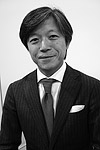 For our second-last interview from the 2012 Consumer Electronics Show, Imaging Resource publisher Dave Etchells and senior editor Shawn Barnett met with Kazuto Yamaki, Chief Operating Officer of Sigma Corp.
For our second-last interview from the 2012 Consumer Electronics Show, Imaging Resource publisher Dave Etchells and senior editor Shawn Barnett met with Kazuto Yamaki, Chief Operating Officer of Sigma Corp.
All of Sigma's products are produced at the company's own factory in Aizu, Japan, and so we were pleased to hear Yamaki-san's report that impact to the company from last year's quake--although clearly unnerving for those present--was relatively minor, compared to some others in the photo industry. Yamaki-san also discusses the increasingly competitive compact system camera market, and which mounts he believes to be the most promising for third-party lens development. Other topics of particular interest include advances in lens design and materials technology, the increasing requirements placed on optics by higher-resolution camera bodies, and Sigma's plans for its own camera lineup, which is based upon the unique full-color Foveon image sensor technology.
Dave Etchells: I think it's been almost two years now since we last interviewed you. What would you say you're seeing in terms of trends in the lens market? Any new behavior by consumers? Is the mix of what lenses are most popular changing any?
Kazuto Yamaki: Two years, yes. I don't think there's been significant change; the trend is the same. The higher the pixel count a DSLR has, the higher the lens quality required.
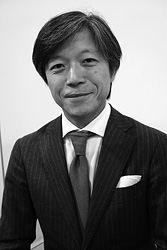 DE: So you are seeing more demand for higher quality lenses as the pixel count has gone up?
DE: So you are seeing more demand for higher quality lenses as the pixel count has gone up?
KY: Yes.
DE: Does that mean more focus on primes, or are higher-end zooms selling better now?
KY: People are interested in high quality lenses, so primes are becoming more popular everywhere in the world. Several years ago, only in Japan, Korea, Taiwan; in those countries primes were popular. Now in every country, the prime is increasing. But not only primes, customers want high quality-zoom lenses.
DE: The interchangeable lens market is getting really complicated these days because there are so many different mounts: Sony's NEX E-mount, Samsung's NX mount, Micro Four Thirds, now Nikon has the CX mount, so how do you deal with that as an independent lens maker? How do you decide where to put your resources?
KY: Currently we are looking at serious photographers or photo enthusiasts. We think it's our mission to support as many systems as possible. But we try to support systems that provide high quality images. So, for compact system cameras, we think the Sony system and Micro Four Thirds are the categories that we should support.
DE: How widely used does a camera platform have to be before it becomes economical for you to develop lenses for it? How do you decide where the critical mass is?
KY: Of course, it's volume. If we produce lenses for a system but they don't move from our inventory, that's a problem. Even if it's a small quantity, they need to move steadily; that's the minimum condition.
We have our own factory, so we can do almost everything at our factory. As a result, we are quite flexible in terms of the volume of production. For example, we can produce a small volume of lenses, but it would be a problem if we produce a lens and it stays for months, or a year, or two years. That's a problem. But if it's steadily moving, we can make it [even if the quantity is small].
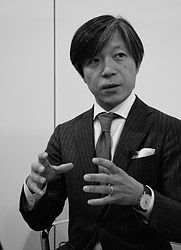 DE: Ah - so once you have a lens design, it's fairly easy to switch production from one model to another? You don't have to decide we're going to make 100,000 and just make a very large quantity -- you can efficiently make small numbers of them?
DE: Ah - so once you have a lens design, it's fairly easy to switch production from one model to another? You don't have to decide we're going to make 100,000 and just make a very large quantity -- you can efficiently make small numbers of them?
KY: Yes. Of course, the electronics or some mechanicals are different for each mount, but we adjust our production plan.
DE: I'd imagine for lens designs too, once you have a lens with a shorter back-focus distance that you could use a similar design whether on Micro Four Thirds or NEX. I guess it depends on image circle, too.
KY: We cannot be very aggressive about the back-focus. So, we have to always take a balanced approach between image quality and back-focus.
DE: So there's a trade-off between image quality and back-focus distance?
KY: It depends on the type of lens. For example, on a wide-angle lens it helps to have a shorter back-focus. In the case of a standard or telephoto lens it doesn't matter, but sometimes it becomes problematic.
DE: Have there been any advancements in technology over the last two years that have helped your lens designs? I know technology is always advancing, but are there any particular technologies that have changed recently?
KY: Yes. First of all, we cooperate with glass material manufacturers, and they continuously introduce new materials. I think FLD ["F" Low Dispersion] was introduced about two years ago: We worked with a glass material company, and now we are using glass which has characteristics similar to Fluorite.
DE: I think I remember joking about FLD meaning "Frighteningly Low Dispersion" or something (laughter). So that was just starting to come available a couple of years ago now and that's in more of your lenses. How many products is that in now?
KY: [A few] less than ten.
DE: That's a fair number of lenses in just a couple of years.
KY: Yes, recent models.
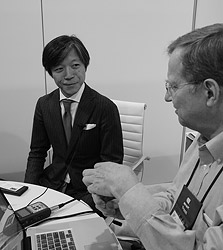 DE: It seems like in coating technology, nano crystal coating is a breakthrough, but we're seeing it in only a very few, very high-end lenses. Can you tell us something about how nano crystal coatings are made, and why they are so expensive? Or is that a proprietary technology to just a few manufacturers?
DE: It seems like in coating technology, nano crystal coating is a breakthrough, but we're seeing it in only a very few, very high-end lenses. Can you tell us something about how nano crystal coatings are made, and why they are so expensive? Or is that a proprietary technology to just a few manufacturers?
KY: Well, there are some differences from company to company. First of all, it takes time to coat that way. It's a slow process, and the yield is not very high. That's a problem. Also, the surface is soft and fragile, so it requires very careful treatment.
DE: What kind of material is the nano crystal substance itself?
KY: Sorry, we can't tell that in public.
DE: Are you starting to use that in some of your lenses, then?
KY: We are starting to, but actually it helps to reduce ghosts and flare... it's just one technology to reduce ghosts and flare, but it doesn't solve all the problems. To reduce ghosts and flare we have to take everything into account, not only the coating but also the shape of the lens barrel. Actually, the shape of the barrel influences ghosts and flare much more than that. We did lots of studies on it and we developed our own simulation program for ghosts and flare, so right after we make a design using 3D CAD, we can simulate flare and ghosts. And we change the shape of the lens barrel to reduce it. We can also simulate ghosts and flare taking the coating into account, but nano crystal coating does not solve everything. It's just one tool.
DE: Yes, I remember when we last talked you explained how your ray-tracing includes the lens barrel, so it's not just the optics; you do ray-tracing for scattering off the lens barrel, and that's unique software you developed yourself.
KY: Yes.
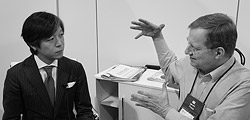 DE: People are using cellphones all the time now for photography, and we're starting to see some accessories like clip-on lenses and things for cellphones. Do you think you'd ever do something like that?
DE: People are using cellphones all the time now for photography, and we're starting to see some accessories like clip-on lenses and things for cellphones. Do you think you'd ever do something like that?
KY: Many people have made requests, but we don't think it's a category we should get into. As I said, we are now looking at only serious photographers. Of course I use a smartphone and take pictures with it myself, but I think the purpose of the images taken by smartphones is different.
DE: I guess if people worried that much about image quality to put a lens on their cell phone, they'd use a dedicated camera instead.
KY: Yes, that's right.
DE: You mentioned this before, or alluded to it: the pixels on sensors are getting so small that they place much higher demands on lenses than previously. Have you been, or do you see yourself going back to older designs now and updating them? So rather than just making new lenses, do you see yourselves going back and refreshing the line?
KY: Yes, that's actually what we are doing. Also, we are also adding some new features, like optical stabilizers.
DE: Going into the future, where do you see new improvements coming? Where do you see technology having an impact to help lens development?
KY: That's a good question. As I said, new glass materiasl help to improve the quality, and also the design software needs to be improved.
DE: Ah, that will continue to evolve, the design software.
KY: So, actually, to evaluate image quality and optical performance using design software is a bit difficult. It still relies on the person's experience. There are many, many ways to evaluate lens performance, so it's really important that the optical designer has lots of experience. But if a design program helps engineers to evaluate the lens in many aspects, that is good. And also, optics are relatively flexible. [Ed. note: We believe that what Yamaki san meant by this comment is that optics have a lot of degrees of freedom in the designs. Per his following comments, it's easy to change the optics to take advantage of other changes in technology.] Optics are always a fight against mechanical constraints or conditions. In order to make better optics for a lens, the technological improvements from the surrounding technology are important. For example, if we make a better motor, a smaller motor, or a more powerful one, it helps to make better optics.
DE: Ah, I see; a better motor can mean that you have more room in the envelope for optics. When we tested the SD1, we were extremely impressed with the image quality at low ISOs, and the resolution is exceptional. It also seems to have a different character in the images: they're 3-dimensional in ways we don't see with regular Bayer pattern arrays.
KY: Yes.
DE: So now in your product line you have the SD15 at the consumer end, and you have the SD1 for pros; there's a very large price spread between them. Do you see finding some way to come in the middle of that more, with something higher-end than the SD15 but that doesn't cost ~8,000 dollars?
KY: We understand the SD1 price is very high, but we are working very hard to provide cameras like the SD1 at a more affordable price. In the future, we will expand our product lineup.
DE: Do you think over time, as the SD1 becomes more mature and you recover some of your engineering costs, that might come down some too?
KY: We are making every effort. Of course, first of all we need to reduce the actual manufacturing cost per unit, but it also costs a lot to develop new sensors. So now we are separating the two issues. To recover the initial investment takes time, so now we understand that currently it's a longer investment period to develop sensors. But also, we are now working very hard to reduce manufacturing costs.
DE: I see, you've separated the two somewhat. So you have a long payback period on sensors, and a short payback on manufacturing?
KY: That's right.
DE: The question I ask everybody every year is what do you think the economy is doing? This is a very complicated time.
KY: Yeah, it's really a tough period for us. Sigma is very strong in Europe, but since winter (that means the Nov-Dec timeframe), the European market has been slowing down, so it's becoming very tough. Also, the Euro has depreciated very much against the Yen. We only produce our products in Japan, so it's a really tough time for us.
DE: It seems like the US economy is starting to show a few glimmers of hope, are you seeing a pickup of business in the US?
KY: Actually, the photo business the US market isn't so bad. It's picking up. My view is the photo business is not so influenced by the general economy. It's a hobby business, and maybe because we are just working in a very niche market. But in Europe, this case may be the first time in my experience that the photo industry is influenced by the general economy.
DE: And less so in the US.
KY: Yes.
DE: It's been a very tough year for other reasons: there was the tsunami and earthquake, and the floods in Thailand. Your manufacturing is all mostly in southern Japan?
KY: North Japan. It's closer to the epicenter.
DE: Were you affected much by the earthquake?
KY: Fortunately, not so much. Our factory is located in the mountains about 100 km from the ocean. So we were not affected by the tsunami at all, and the area where the factory is located is known to have a very stable geology so we were not so affected.
DE: Oh, that's very fortunate.
KY: I was there, I was in the factory when the earthquake hit Japan. It was very scary. Many things were falling down: many materials, glass; big machines moved around. It was quite scary, but the factory was okay and we were really lucky that electricity didn't go down in that area. The next day, we asked our suppliers and workers to fix the machines.
DE: So things shook and moved around, and there was a lot of damage from things falling, but the machines themselves were okay?
Shawn Barnett: Were you subject to electric service interruptions or brownouts?
KY: Yes, that was very hard. But we tried to reduce our power consumption as much as possible while keeping our operations the same. We reduced power consumption more than 15% compared to two years ago. That's a requirement from the government, and also from the company.
DE: We're glad to hear that the earthquake had only a minor impact on you. Thank you very much for your time.
KY: Thank you very much.